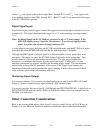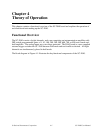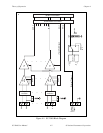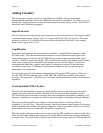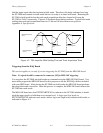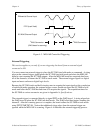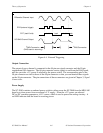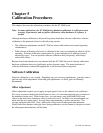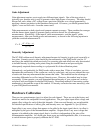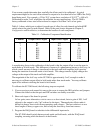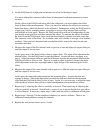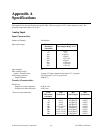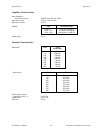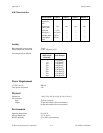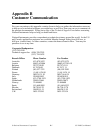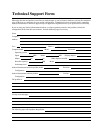
Calibration Procedures Chapter 5
SC-2040 User Manual 5-2 © National Instruments Corporation
Gain Adjustment
Gain adjustment requires you to apply two different input signals. One of the two points is
typically zero, because zero is easy to generate with a high degree of accuracy. The other should
be near full scale, either a DC-voltage from a precision calibrator or a voltage generated by
applying a known excitation to the transducer being used. Of course, you should generate both
signals—zero and full scale—from the same source.
Take measurements on both signals and compute separate averages. Then combine the averages
with the known input signals to generate linear correction factors for all subsequent
measurements. Specifically, if the input X yields measurement x, and the input Y yields
measurement y, then you should process measurement z as shown in the following equation to
yield the corrected measurement Z:
Z = X +
(Y − X)(z− x)
(y− x)
.
Linearity Adjustment
The SC-2040 seldom needs linearity adjustment because its linearity is quite good, especially at
low gains. Linearity error is often caused by the nonlinearity of the DAQ board you use. If
necessary, the method described previously for correcting gain and offset error may be extended
to include linearity by taking more points along the transfer function and processing the
subsequently acquired data according to a polynomial fit of the calibration points.
Alternatively, and preferably for DAQ boards with no more than 12 bits of resolution, you can
determine the nonlinearity of the system on a code-by-code basis, and you can subtract the error
of each code from any measurement that returns that value. This method has the advantage of
correcting differential as well as integral linearity errors. However, this method may be time-
consuming. If time permits, you may determine the nonlinearity of your system on a code-by-
code basis with even higher resolution DAQ boards. Describing methods of measuring system
nonlinearity is beyond the scope of this manual. If linearity correction becomes necessary, refer
to your DAQ board user manual.
Hardware Calibration
There are two potentiometers (pots) to adjust for each channel. These are set at the factory and
should not need to be readjusted for most applications. The pots adjust input offset voltage and
output offset voltage for each of the eight channels. Gain error and linearity are not adjustable.
For detailed specifications of offset, gain, and linearity error, see Appendix A, Specifications.
Input offset is any error voltage that appears to be added to the input signal; that is, its effect is
multiplied by the gain of the instrumentation amplifier. Output offset is any error voltage that
appears to be added to the output signal; that is, its effect is independent of the gain of the
instrumentation amplifier. At a fixed gain, these errors are indistinguishable; thus, it is necessary
to switch between gains to properly calibrate the SC-2040.



